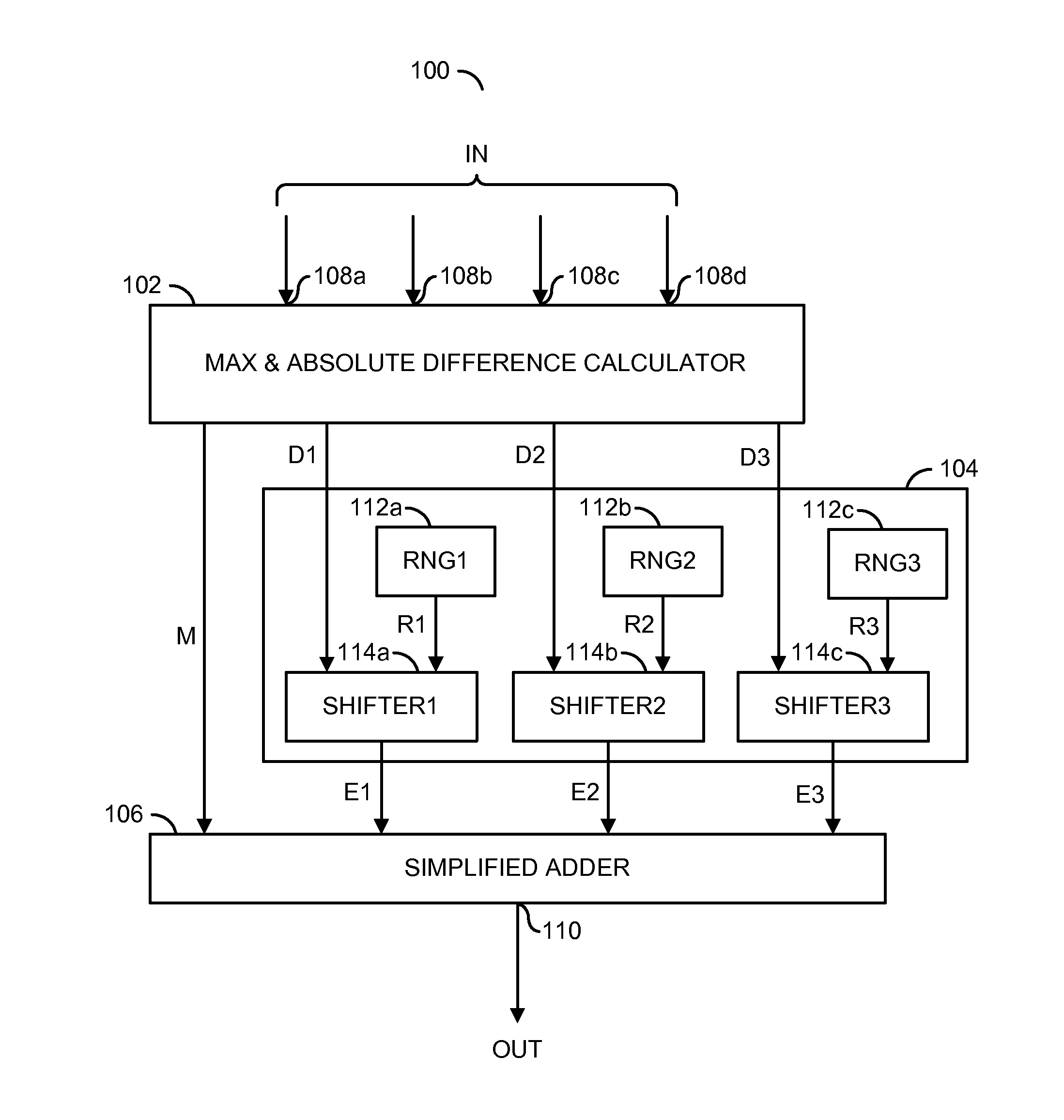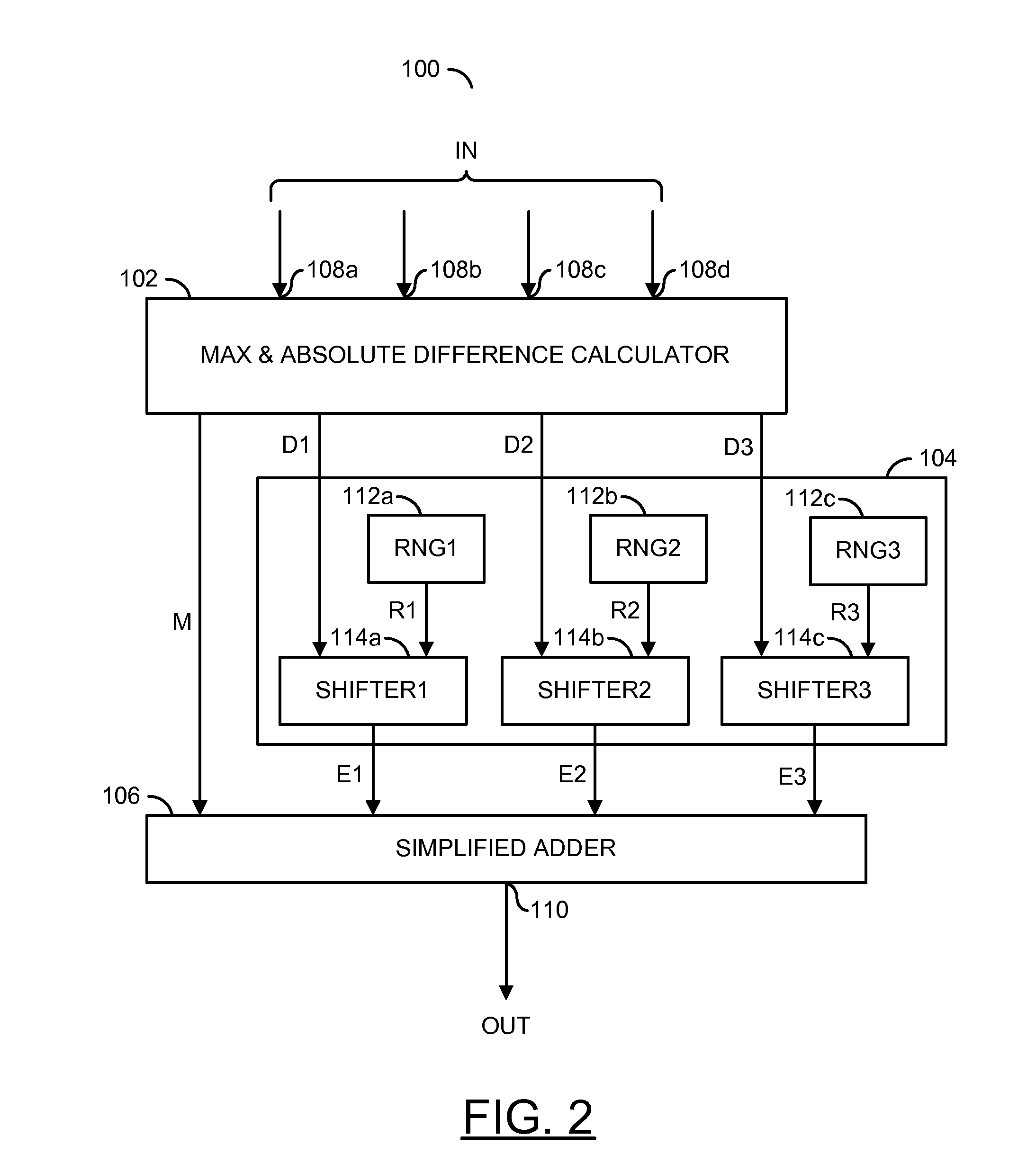Computation of jacobian logarithm operation
a computation and logarithm technology, applied in the field of wireless communication, can solve the problems of reducing the overall speed of the decoder in which the max* operation is implemented, and the quality of the decoding compared with pure log-map techniques, and achieve the effect of increasing decoding
- Summary
- Abstract
- Description
- Claims
- Application Information
AI Technical Summary
Benefits of technology
Problems solved by technology
Method used
Image
Examples
Embodiment Construction
[0016]Some embodiments of the present invention may provide an approximate computation of the Jacobian logarithm (or max*) operation at high frequencies. The computation may be useful in the Logarithmic-Maximum A Posteriori decoding (LOG-MAP) technique used for decoding of the turbo codes. The codes may be used in many modern wireless communications standards. The wireless communications standards may include, but are not limited to, a Long Term Evolution (LTE) standard (3GPP Release 8), an Institute of Electrical and Electronics Engineering (IEEE) 802.16 standard (WiMAX), a Wideband-CDMA / High Speed Packet Access (WCDMA / HSPA) standard (3GPP Release 7) and a CDMA-2000 / Ultra Mobile Broadband (UMB) standard (3GPP2). Other wired and / or wireless communications standards may be implemented to meet the criteria of a particular application. Log-MAP decoding may be organized in such manner that a decoding speed may be determined by speed of the max* operation.
[0017]For a pair of input values...
PUM
 Login to View More
Login to View More Abstract
Description
Claims
Application Information
 Login to View More
Login to View More - R&D
- Intellectual Property
- Life Sciences
- Materials
- Tech Scout
- Unparalleled Data Quality
- Higher Quality Content
- 60% Fewer Hallucinations
Browse by: Latest US Patents, China's latest patents, Technical Efficacy Thesaurus, Application Domain, Technology Topic, Popular Technical Reports.
© 2025 PatSnap. All rights reserved.Legal|Privacy policy|Modern Slavery Act Transparency Statement|Sitemap|About US| Contact US: help@patsnap.com



